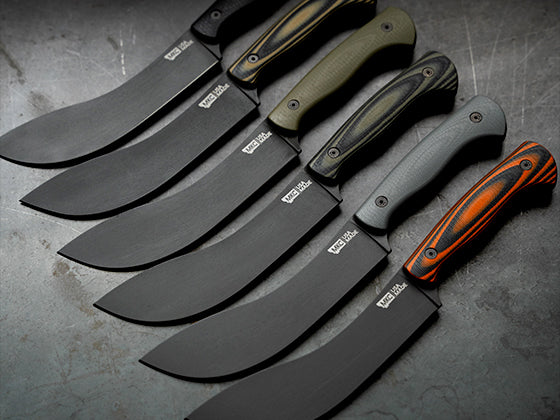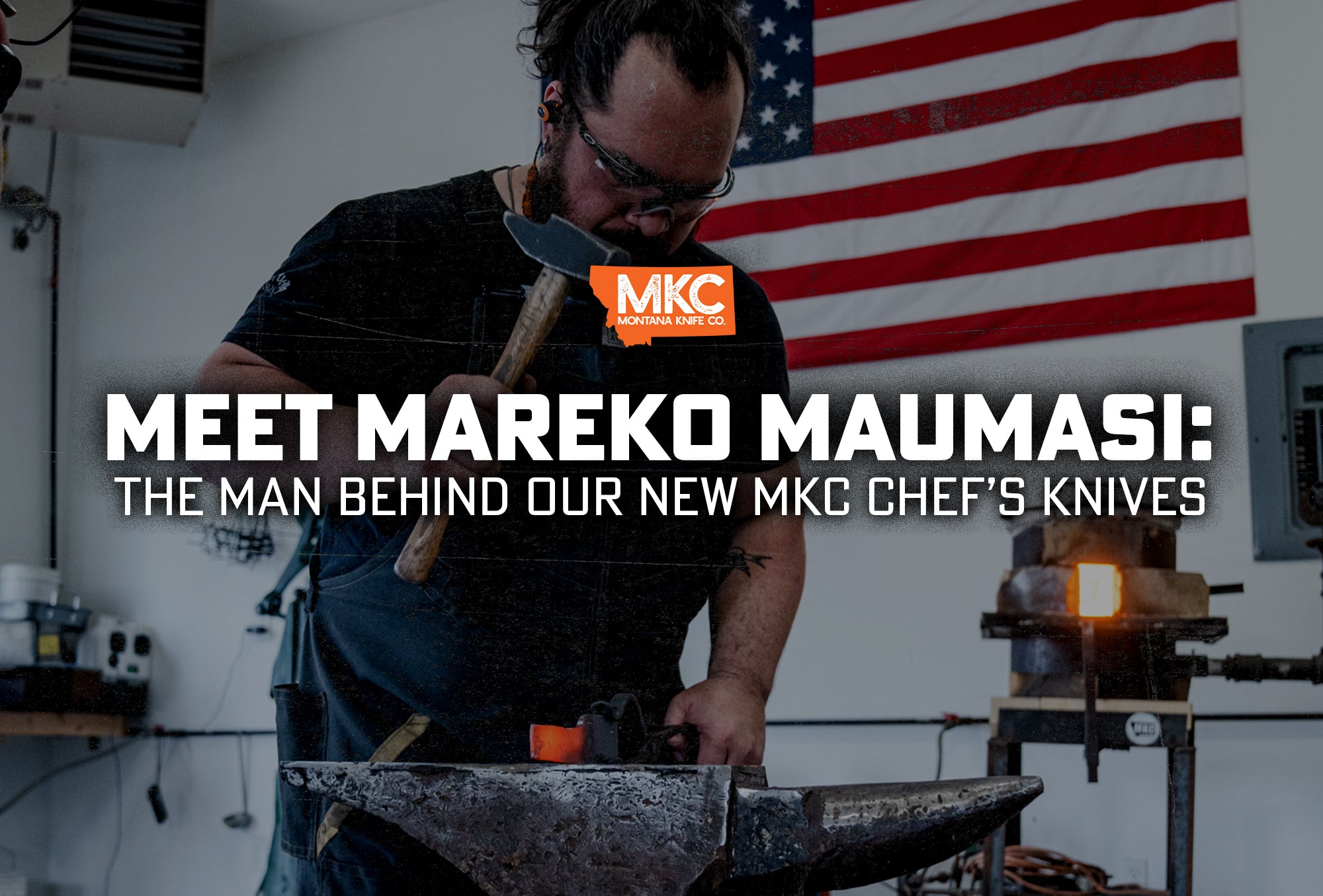To reach the top levels of any field, practitioners have to pass through a gauntlet of training and certifications.
Lawyers go through years of undergrad and then law school, followed by a rigorous bar exam in their state. Even with such a high standard, there are about 1.3 million lawyers currently in the U.S.
Doctors go through undergrad, medical school, residency, and then have to pass the U.S. Medical Licensing Examination. Just over one million doctors presently practice in the U.S.
Want to get more elite and rare — and difficult? Look no further than the Navy SEALs. Only 1% of the Navy makes SEAL status; that’s fewer than 2,500 members.
What does all this have to do with knives? Well, knife makers go through some pretty rigorous training and certifications, too.
A Journeyman Smith rating is something like a specialized college degree for a knife maker. A Master Smith rating is more akin to a master’s degree, including multiple tests to prove a significant level of ability and craftsmanship.
Only 122 knife makers have passed the American Bladesmith Society’s test to become master bladesmiths. If you want to join their numbers, read on to find out what it takes.
The American Bladesmith Society
The American Bladesmith Society (ABS) was formed to preserve and promote the art of the forged blade.
The ABS is the major caretaker of the craft as well as the sanctioning body of the journeyman and master smith process. It’s also the single biggest reason why bladesmithing and forging knives has exploded to the level it’s reached today.
The ABS facilitates community among knife makers, including mutual learning and encouragement. It provides a forum in which bladesmiths can stand on the shoulders of those who came before, but also in which artisans can help lift other makers up on their shoulders for the future of the craft.

How to Become a Master Bladesmith
The first step to becoming an ABS master bladesmith is to become a member of the ABS. This is something I can’t recommend enough to new knife makers. For a nominal yearly fee, you enter into a community with unmatched resources and a rich heritage in the craft.
Once you’ve been a member for three years, you’ll be eligible to test for your Journeyman Smith rating. This involves a two-stage process that includes a performance test and a judging panel.

The Performance Test
For the performance test, you’ll have to hand-forge a knife that’s no longer than 15 inches, with a blade that’s no longer than 10 inches and no wider than 2 inches.

The knife then has to prove itself in a gauntlet of three tests, all performed in front of an ABS master bladesmith.
- In a test for sharpness, the blade has to cut through a one-inch, free-hanging rope in one swing.
- In a test for edge toughness and retention, the knife has to chop through two 2x4s and still be able to shave hair without resharpening. This shows the blade can put up with being slammed into something hard without deforming, chipping, or bending, while still holding a sharp edge.
- In a test for the knife maker’s control over heat treating, the blade has to survive being bent 90 degrees in a vise without breaking, though slight cracking is acceptable. This demonstrates whether the smith can make a blade that’s tough, but not so hard that it’s brittle and prone to breaking under stress.

The Judging Panel
After passing the performance test, the smith moves on to the knife-judging stage.
The smith must present five knives to a panel of judges at the Atlanta Blade Show. These ABS master bladesmiths judge the knives for fit, finish, and design. They don’t require perfection at this stage, but they do expect a high level of execution that shows the maker’s ability to design and build a knife to a very high standard. Those who reach that standard then receive their Journeyman Smith rating and earn the right to stamp their blades with a J.S.

Moving on to Master
The testing process for becoming a master smith follows the same basic format, but it’s only open to those who’ve been an ABS journeyman smith for at least two years.
The performance portion of the master bladesmith test is the same as the journeyman’s, except that the knife must be made with a Damascus steel blade of 300 layers or more. It must still slice a one inch rope, chop through two 2x4s and shave without sharpening, and bend 90 degrees without breaking.
When it comes to the judging panel, the maker still has to present five knives to a panel of master smiths at the Atlanta Blade Show. This time, though, one of the blades must be a Quillon dagger.
A Quillon dagger is a complicated and difficult knife to make. And unlike the other four knives, whose designs are up to the knife maker, the Quillon submission has some specific requirements — like a fluted and twisted, wire-wrapped handle. It pushes the smith out of their comfort zone and proves that they can adhere to strict design guidelines.
The knives in the master smith test are judged very harshly; any small mistake results in failure. As a result, only 122 knife makers have earned their Master Smith rating — and the steel M.S. stamp — from the ABS.

A Lifelong Journey
Though it’s absolutely an achievement, passing the ABS master smith test doesn’t necessarily make you a master for life. It should just be the beginning.
I strongly believe that you must continue to learn and grow and constantly seek perfection. Knife makers should never get stuck in their ways. They should always be open to new techniques. They should push the craft forward for future knife makers to follow.
At the same time, just because a knife maker hasn’t passed the master smith test doesn’t mean he or she isn’t a great bladesmith. The explosion of knowledge through the internet has opened the door for many knife makers to learn, excel, and get their names and work out there.
I still hold a very high level of respect for any knife maker who passes the test, but we’re no longer in a society where a single test is the only way to show your greatness.
I’m one of those knife makers who benefited from the test before you could learn bladesmithing principles online. I was just 15 years old when I passed the journeyman test, and 19 when I became a master smith. Those ABS ratings gave me a lot of credibility and publicity that would have been otherwise difficult to achieve as a very young knife maker, and my career benefited substantially.
Today, I’m still serious about making knives and about encouraging others to get into the craft. If you’re a knife maker and you’re serious about becoming a journeyman smith or master smith, consider joining the ABS. The sooner you join, the sooner you’ll be eligible to test for your ratings.
by Josh Smith, Master Bladesmith and Founder of Montana Knife Company






































